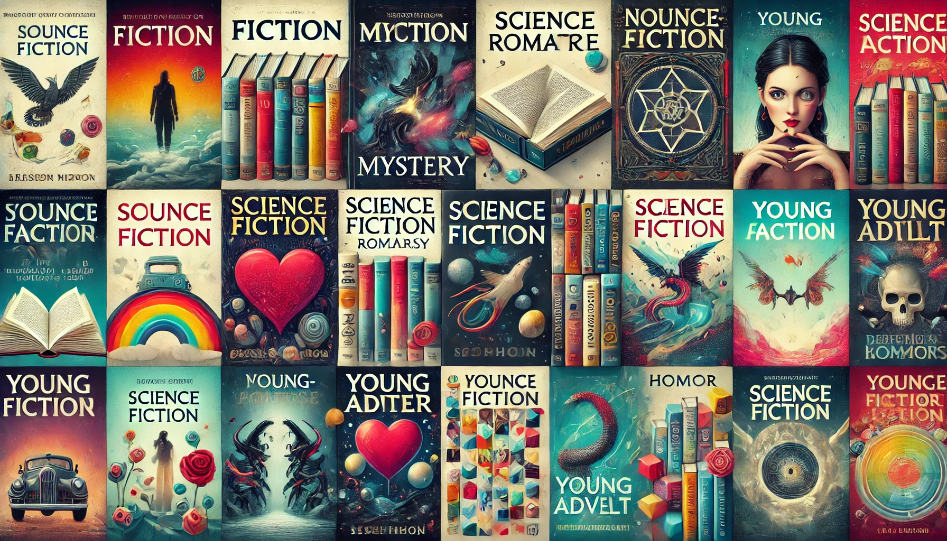Exploring the Popularity of Book Genres: A Percentage Breakdown
-
Richard Pen
| Monday 12th of August 2024 11:01:18 AM (UTC)

In the dynamic world of literature, readers' preferences span a wide range of genres, each offering a unique experience. Understanding the popularity of these genres is crucial for authors and publishers who aim to cater to diverse audiences and stay ahead of current trends. In this article, we delve into the most popular book genres, breaking them down by percentage based on various surveys and sales data.
1. Fiction (25%)
Fiction remains the most popular genre, commanding a significant share of the market. This broad category includes sub-genres like literary fiction, contemporary fiction, and historical fiction. Readers are drawn to fiction for its ability to transport them to different worlds, explore complex characters, and offer a deep emotional connection to the story.
2. Mystery/Thriller/Crime (20%)
The thrill of a good mystery, the suspense of a thriller, and the intrigue of a crime novel make this genre a close contender in popularity. Readers love the challenge of solving puzzles, the adrenaline rush of high-stakes plots, and the satisfaction of uncovering secrets. This genre attracts readers looking for excitement and mental stimulation.
3. Romance (18%)
Romance is a perennial favorite, capturing the hearts of readers with tales of love, passion, and relationships. Whether it’s a light-hearted romantic comedy or an intense historical romance, this genre appeals to those who enjoy emotional journeys and happy endings. Its broad appeal across age groups and cultural contexts contributes to its strong popularity.
4. Science Fiction & Fantasy (15%)
Science fiction and fantasy hold a firm place in the hearts of readers who enjoy escaping to imaginative worlds. The genre’s appeal lies in its ability to explore futuristic scenarios, magical realms, and alternate realities. Fans of sci-fi and fantasy are drawn to the creativity, complex world-building, and exploration of philosophical and ethical questions.
5. Non-Fiction (12%)
Non-fiction encompasses a wide array of topics, from memoirs and biographies to self-help, history, and science. This genre appeals to readers seeking knowledge, personal growth, and real-life stories. The popularity of non-fiction has grown in recent years, with more readers turning to books that provide practical advice, inspiration, and insights into the human condition.
6. Young Adult (8%)
The young adult (YA) genre, though often aimed at teenagers, has garnered a large following among adults as well. YA books are known for their relatable characters, coming-of-age themes, and often fast-paced plots. The genre covers a range of topics, from dystopian societies to high school drama, making it a versatile and popular choice.
7. Horror (2%)
Horror, while niche, has a dedicated audience that enjoys the thrill of fear and the exploration of dark themes. This genre often delves into the supernatural, psychological, and macabre, appealing to readers who appreciate the intensity and suspense that horror stories provide. Its smaller market share is balanced by the loyalty of its fanbase.
Conclusion
The landscape of popular book genres reflects the diverse interests of readers worldwide. Fiction, with its wide range of sub-genres, remains dominant, while mystery, romance, and science fiction/fantasy also capture significant portions of the market. Non-fiction’s steady rise indicates a growing interest in real-world stories and knowledge, while young adult and horror cater to specific, passionate audiences.
As the literary world continues to evolve, it's essential to stay informed about emerging trends and shifts in genre popularity. To explore how new genres, technologies, and the power of the internet are shaping the future of storytelling, check out The Future of Storytelling: New Genres, Technologies, and the Power of the Internet. This article offers valuable insights into the ever-changing landscape of literature and how it's being transformed in the digital age.
Start the conversation
Become a member of TxtTale to start commenting.
Already a member?
